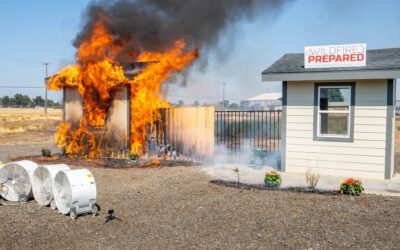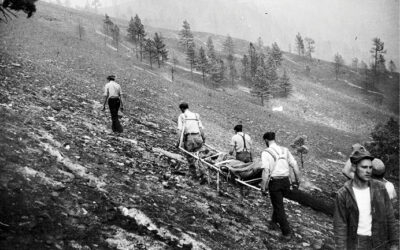Thousands evacuated from fire north of Sacramento

Flames from a wildfire consume a residence near Oroville, Calif., on Sunday, July 9, 2017. Evening winds drove the fire through several neighborhoods leveling homes in its path. (AP Photo/Noah Berger)
DON THOMPSON, Associated Press
OROVILLE, Calif. (AP) — With looming floods and roaring flames, Chuck Wilsey’s year sounds more like ancient scripture than modern living in Northern California.
Wilsey returned to his ranch home in Oroville on Monday, relieved to learn it had been spared by the wildfire, just as he had stayed clear of troubles brought on by a damaged spillway at a nearby dam five months ago.
“I don’t know what’s worse — fire, or water — it’s a toss-up,” Wilsey, 53, told The Associated Press after returning to his home on Monday afternoon.
He and his family were among the evacuees as flames raced through grassy foothills in the Sierra Nevada, about 60 miles (97 kilometers) north of Sacramento. Most of those evacuations remain in effect, though Wilsey and some others have been allowed to return home.
The blaze burned nearly 9 square miles (23 square kilometers) of grass, injured four firefighters and destroyed at least 37 structures. Officials couldn’t immediately say how many were homes. It was 40 percent contained.
As the fire weakened throughout the day, waves of the 4,000 evacuees such as Wilsey were allowed to return home, though thousands were told they would have to stay away for at least another day.
Crews were making progress against that fire and dozens of others across California, Colorado, Arizona and New Mexico, and into Canada.
Wilsey was far from celebratory, instead regrouping almost immediately and making new plans in case the fire makes another run at them. “I was ripping pictures off the wall trying to get ready,” Wilsey said.
He said he was leaving his trailer attached to his truck and telling his daughters to keep prized possessions they couldn’t take the first time close at hand.
The area burning is southeast of Oroville, near where 200,000 residents downstream from the 770-foot-high Oroville Dam were briefly evacuated in February when the structure’s spillways began crumbling. Wilsey’s home was far enough away that he didn’t have to evacuate from the floods.
His daughter, Krystle Chambers, who lives on the same property, said the one-two punch of floods and fires was taking its toll.
“It’s hard, it’s rough,” she said. “Way too many hits. First it’s this side of town, then the other side of town. It almost makes you want to move.”
Pam Deditch, who is running the shelter where Wilsey and his family were huddled, also managed a shelter during the winter drenching.
“If it’s not one thing, it’s the other,” she said with a laugh. “We’re used to this. We’re resilient. We’re strong. We get fires and we get flooding.”
In Southern California, at least 3,500 people remained out of their homes as a pair of fires raged at different ends of Santa Barbara County. The larger of the two charred more than 45 square miles (116 square kilometers) of dry brush and has burned 20 structures since it broke out. It was 20 percent contained.
The fires broke out amid a blistering weekend heat wave that toppled temperature records. Slightly cooler weather is expected to give crews a break in the coming days.
California officials said the extraordinarily wet winter caused thick spring blooms that are now dried out and burning, making for unpredictable fire behavior.
“You see rapid fire growth in a lot of these fires, larger acreage consumption, which makes it very difficult to firefighters to fight,” said Bennet Milloy, spokesman for the California Department of Forestry and Fire Protection.
In Colorado, crews were winding down the fight against a wildfire that temporarily forced the evacuation of hundreds of people near the resort town of Breckenridge. Firefighters built containment lines around at least 85 percent of the blaze.
Across the border in Canada, crews contended with more than 200 wildfires in British Columbia that have forced thousands to flee and destroyed dozens of buildings, including several homes and two airport hangars.
“We are just, in many ways, at the beginning of the worst part of the fire season and we watch the weather, we watch the wind, and we pray for rain,” British Columbia Premier Christy Clark said.
Rob Schweizer, manager of the Kamloops Fire Centre, said it had been an unprecedented 24 hours. “We probably haven’t seen this sort of activity that involves so many residences and people in the history of the province of B.C.,” he said.
___
Associated Press writer Christopher Weber contributed from Los Angeles.
All contents © copyright 2017 Associated Press. All rights reserved.




